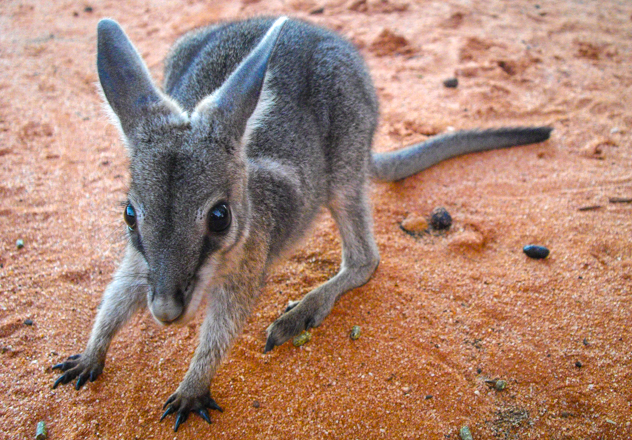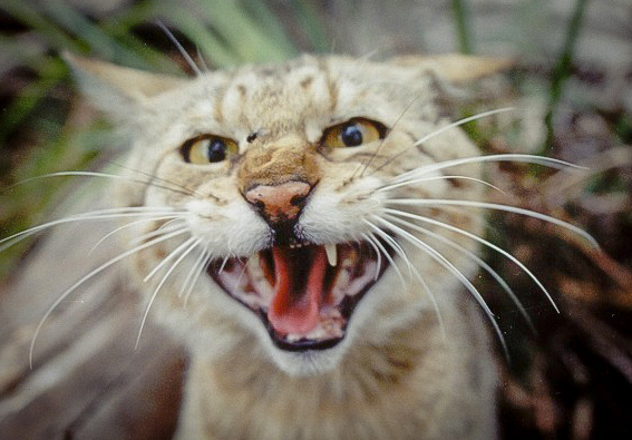The Bridled Nailtail Wallaby was believed to be extinct for much of the 20th century, until the chance discovery of a surviving population in 1973. AWC reintroduced a population to Scotia Wildlife Sanctuary in 2005, followed by the Pilliga in 2019.

 © Aline Poh/AWC
© Aline Poh/AWC
AWC protects an important population of Bridled Nailtail Wallabies at Scotia Wildlife Sanctuary and the Pilliga National Park, where they are doing well and showing signs of breeding.
In July 2019, AWC reintroduced Bridled Nailtail Wallabies to the Pilliga, as part of our partnership with NSW National Parks and Wildlife Service. In time, AWC’s populations in NSW are projected to grow to at least 3,000 individuals.
 © AWC
© AWC
Over the last 20 years, Bridled Nailtail Wallaby populations in unfenced national parks have declined, while the population within Scotia’s feral predator-free fenced area has increased to more than 1,700 animals.
Reasons attributed to the decline of this species include competition for resources with domestic stock (particularly sheep), altered habitat, and predation by exotic predators – especially feral cats and foxes. Large numbers were killed by pastoralists in the early 20th century, and were hunted for their pelts.
 W Lawler/AWC
W Lawler/AWC
Description
The Bridled Nailtail Wallaby is a medium-sized wallaby, with males reaching up to eight kilograms and females reaching up to six kilograms. They are easily identifiable by the white ‘bridle’ line which runs from the back of the neck down behind each of the forearms. Their fur is soft and greyish in colour, becoming darker towards the tip of the tail.
Ecology
Bridled Nailtails are mostly nocturnal, emerging to feed in open grassy areas before dusk. In cooler months, they are sometimes seen basking in the afternoon sun. During the day they shelter in hollow logs or beneath bushes, sometimes excavating a shallow depression or ‘scrape’.
Bridled Nailtail Wallabies are usually solitary, sometimes feeding together in small groups. Their diet consists of mixed forbs, grass and browse, including chenopod species and soft grasses (such as species of Chloris, Sporobolus, and Bothriochloa).
Breeding is opportunistic and can occur at any time of year when conditions are favourable.
Range and abundance
The Bridled Nailtail Wallaby was historically found throughout semi-arid south-eastern Australia, from the Murray River, in north-western Victoria, to Charters Towers, in Queensland. There are records from the slopes and plains west of the Great Dividing Range, in tall shrubland and grassy woodland habitats.
The only naturally occurring population is confined to Taunton National Park, in Queensland, with small reintroduced populations present at Idalia National Park and Avocet Nature Refuge in central Queensland.
Donate Now to help protect the Bridled Nailtail Wallaby
Donate Now“Scotia Wildlife Sanctuary … a vitally important project for Australia and for the planet.” – Sir David Attenborough Scotia Wildlife...
Representing a landmark collaboration between AWC and the NSW National Parks and Wildlife Service, the Pilliga project area protects a...
AWC helps protect a population of Kangaroo Island Dunnarts on Kangaroo Island.
Koalas inhabit eucalypt forests and woodlands in eastern Australia from north Queensland through to south-east South Australia.